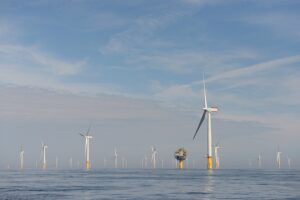Global energy investment reached $US1.8 trillion in 2018, stabilising after three years of decline, according to the International Energy Agency. However, the stabilisation was due to more spending on oil, gas, and coal supply, while fossil fuel-based generation and renewable power both saw declines.
Unfortunately, while declines in renewable energy investment can sometimes be less concerning – due to the nature of economies of scale leading to renewable technologies being able to provide more capacity for cheaper – this does not appear to be the case in 2018.
According to the International Energy Agency’s (IEA) latest World Energy Investment 2019 report, there was a 1 per cent fall in power investment in 2018 – due primarily to less spending on coal power in China and less spending on gas power in the United States. Further, investment in renewable energy technologies was down slightly, as net additions to capacity remained flat even as costs fell in some technologies.
Some good news can be taken from the fact that the lower solar PV spending in China was partly offset by higher renewable energy spending in other areas, including the United States and developing Asian countries.
However, even adjusting for cost declines (as seen below) renewable energy investment increased only marginally in 2018.
 There was a 4 per cent increase in upstream oil and gas spending, due in part to a higher oil price, and a shift to shorter-cycle projects and shale. Further, according to the IEA, there is a global shift in investment towards energy supply projects that have shorter lead times.
There was a 4 per cent increase in upstream oil and gas spending, due in part to a higher oil price, and a shift to shorter-cycle projects and shale. Further, according to the IEA, there is a global shift in investment towards energy supply projects that have shorter lead times.
Specifically, in power generation and the upstream oil and gas sectors, the industry is bringing capacity to market more than 20 per cent faster than at the beginning of the decade, reflecting an effort by industry and investors to better manage risks, as well as lower costs for shorter-cycle assets such as solar PV, onshore wind, and US shale.
 On the other hand, however, even as decisions to invest in coal-fired power plants declined to their lowest level this century and retirements continued to increase, the global coal power fleet nevertheless continued to expand, particularly in developing Asian countries.
On the other hand, however, even as decisions to invest in coal-fired power plants declined to their lowest level this century and retirements continued to increase, the global coal power fleet nevertheless continued to expand, particularly in developing Asian countries.
According to the IEA, the continued investment in coal appears to be aimed at filling a perceived growing gap between increasing power demand and a levelling off of expected generation from low-carbon investments such as renewables and nuclear.
The IEA believes that, without carbon capture technology or political incentives for earlier retirements, coal power and their attendant high CO2 emissions will remain a part of the global energy sector for years to come.
“Energy investments now face unprecedented uncertainties, with shifts in markets, policies and technologies,” said Dr Fatih Birol, the IEA’s Executive Director.
“But the bottom line is that the world is not investing enough in traditional elements of supply to maintain today’s consumption patterns, nor is it investing enough in cleaner energy technologies to change course. Whichever way you look, we are storing up risks for the future.”
One of the IEA’s noted concerns is the belief that approvals for new conventional oil and gas projects “fell short of what would be needed to meet continued robust growth in global energy demand.”
Further, and less business-as-usual, the IEA also raises concerns that “there are few signs of the substantial reallocation of capital towards energy efficiency and cleaner supply sources that is needed to bring investments in line with the Paris Agreement and other sustainable development goals.”
 “Current investment trends show the need for bolder decisions required to make the energy system more sustainable,” Dr Birol said. “Government leadership is critical to reduce risks for investors in the emerging sectors that urgently need more capital to get the world on the right track.”
“Current investment trends show the need for bolder decisions required to make the energy system more sustainable,” Dr Birol said. “Government leadership is critical to reduce risks for investors in the emerging sectors that urgently need more capital to get the world on the right track.”
The report also highlighted the continued capital cost declines for renewable energy technologies, with costs for solar PV declining by 75 per cent since 2010, onshore wind by 20 per cent, and battery storage by 50 per cent.
For the offshore wind sector, capital cost declines for commissioned projects have been less dramatic, “but rising utilisation rates and lower financing costs have driven prices in auctions to new lows.”











